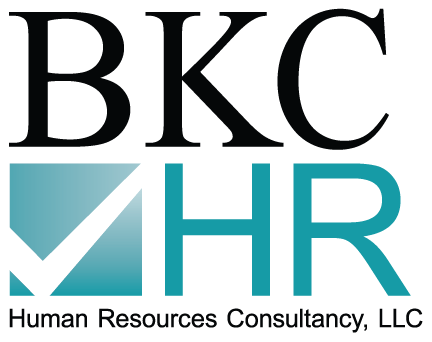The bill known as the Tax Cuts and Jobs Act, enacted in December 2017, added new Section 512(a)(7) to the Internal Revenue Code (IRC). This new section requires tax-exempt organizations to increase their unrelated business taxable income (UBTI) by the amount paid or incurred for qualified transportation fringe benefits (QTFs) provided to employees.
For this purpose, QTFs include the provision of parking and mass transit benefits, and taxable income is created whether the employer pays for the benefits directly or allows employees to pay for the benefits on a pretax basis. Made effective Jan. 1, 2018, mere days after the new law was enacted, many tax-exempt organizations were facing the daunting requirement to calculate, report and pay income tax for the first time.
In December 2018, the Treasury Department provided organizations and their tax advisors with some much-needed guidance on the new law in Notice 2018-99. As described below, some compliance questions have been answered, and underpayment of estimated tax penalties will be waived for certain organizations.
Notice 2018-99 (the Notice) indicates that the Treasury and the Internal Revenue Service intend to publish proposed regulations under Section 512 on the calculation of the increased UBTI attributable to QTFs, but until such guidance is issued, organizations may use any reasonable method to calculate the increase in UBTI under Section 512(a)(7). This includes being able to rely on the guidance provided in the Notice.
Guidance on how to determine the amount of parking expenses that should be treated as an increase in UBTI, indicates that the approach is dependent on how the organization provides the benefit. If the organization pays a third party so that its employees can park at the third party’s garage, for example, then the amount of UBTI is the organization’s total annual cost paid to the third party. However, to the extent that the amount paid for an employee exceeds the Section 132(a)(2) monthly limitation on exclusion ($260 for 2018), the excess amount must be treated as taxable wage compensation to the employee. In this situation, the excess over $260 per month will not be treated as additional UBTI under Section 512(a)(7).
If an organization owns or leases all or a portion of one or more parking facilities where its employees park, the amount included as UBTI may be calculated using any reasonable method. For this purpose, “parking facility” includes indoor and outdoor garages and other structures, as well as parking lots and other areas where employees may park on or near the business premises of the employer, or on or near a location from which the employee commutes to work. “Parking expenses” include repairs, maintenance, utilities, insurance, taxes, security, snow removal and parking lot attendant expenses, but notably does not include depreciation expenses. The Notice provides a four-step method which is deemed to be a reasonable method. These steps are:
- Reserved Employee Spots
The organization must determine the percentage of reserved employee spots in relation to total parking spots and multiply that percentage by the organization’s total parking expenses for the parking facility. The resulting amount is included in UBTI. In addition, the Notice gave organizations the ability, until March 31, 2019, to change their parking arrangements to reduce or eliminate their reserved employee spots and treat those parking spots as not reserved. Any change made under this provision will apply retroactively to Jan. 1, 2018.
- Determine Primary Use of Remaining Spots
If the primary use of the remaining parking spots in the parking facility is to provide parking to the general public, then the remaining parking expenses are not included in UBTI, and you can stop the calculation here. For this purpose, “primary use” means greater than 50 percent of actual or estimated usage, tested during the normal hours of the organization’s activities on a typical day. The “general public” includes, but is not limited to, the organization’s visitors, customers, clients, patients, students and congregants. The organization can use any reasonable method to determine the average actual or estimated use.
- Reserved Nonemployee Spots
If the primary use test in the previous step I
s not met, the organization should identify the number of spots reserved for nonemployees, if any (e.g., reserved for visitors and customers). Like the calculation in the first step, the organization should determine the percentage of reserved nonemployee spots in relation to the remaining total parking spots and multiply that percentage by the organization’s total parking expenses for the parking facility. The resulting amount is not included in UBTI.
- Remaining Use and Allocable Expenses
If after the completion of steps 1-3 there remain parking expenses not specifically categorized as includible or excludable in UBTI, the organization must reasonably determine the employee use of the remaining parking spots during normal hours on a typical day.
The Notice provides 10 examples applying the methodologies described above to various factual situations, determining the amount of reportable UBTI in each situation. Tax-exempt organizations with UBTI in excess of $1,000 for the tax year are required to file Form 990-T and to pay federal income tax at the rate of 21 percent on their UBTI.
It should be noted that even though UBTI is increased under Section 512(a)(7), the provision of parking and mass transit benefits is not considered a separate unrelated trade or business for purposes of Section 512(a)(6). As a result, UBTI reportable under Section 512(a)(7) is calculated in the same “silo” as the income and deductions from an existing unrelated trade or business. Thus, organizations with a net loss from their one unrelated trade or business can offset their UBTI from Section 512(a)(7). However, the Notice does not specify whether or how organizations with multiple unrelated trades or businesses can offset their UBTI from Section 512(a)(7). We hope future guidance will address this issue.
Notice 2018-100, a companion notice, provides relief from estimated tax penalties for 2018 for those tax-exempt organizations that did not pay estimated income tax in connection with their UBTI reportable under Section 512(a)(7). This relief is available only to organizations that were not required to file Form 990-T for the previous tax year and requires timely compliance with their payment of the tax due for the current tax year.
Finally, the State of New York, which imposes a state unrelated business income tax of 9 percent on UBTI, enacted legislation exempting UBTI reportable under IRC Section 512(a)(7) from the state tax.
These actions by the IRS and the State of New York help tax-exempt organizations comply with the new law, but additional guidance could be forthcoming. We will continue to monitor the situation as it develops.




